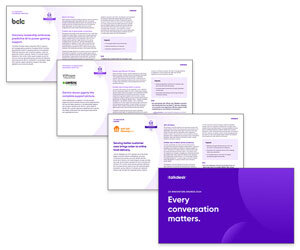Struggling to keep enough agents available when your customers need them most? Shrinkage could be the reason behind the gap.
The good news? In this article, we break down what call centre shrinkage is, how to calculate it, and 7 practical ways to reduce it.
What Is Call Centre Shrinkage?
Call centre shrinkage is the percentage of time your agents are scheduled to work but are unavailable to handle customer interactions. It’s one of the most important metrics to understand when managing staffing and service levels effectively.
Shrinkage is typically broken down into two categories:
Internal Shrinkage
These are activities that happen within the contact centre and are often planned or controllable. Examples include:
- Team meetings
- Coaching or training sessions
- Scheduled breaks and lunches
- One-on-ones or admin time
External Shrinkage
These are factors that occur outside of the organization’s control and are often unplanned. Examples include:
- Sick leave
- Annual leave or vacation time
- Lateness or early departures
- Unexpected personal emergencies
How to Calculate Shrinkage
To effectively manage shrinkage, you first need to measure it. Calculating shrinkage gives you a data-driven way to factor unavailable time into your staffing and forecasting models.
Here’s the formula to calculate shrinkage in BPOs and contact centres:
Shrinkage (%) = (Total Hours of External Shrinkage + Total Hours of Internal Shrinkage) ÷ Total Hours Available × 100
Breakdown:
- External Shrinkage: Unplanned time away, like sick leave, holidays, or lateness
- Internal Shrinkage: Planned activities like breaks, training, team meetings, or coaching
- Total Hours Available: The total number of hours agents are scheduled to work
For a more in-depth view of how to calculate shrinkage, with a free calculator, read our article: What Is Call Centre Shrinkage and How to Calculate It?
How to Reduce Contact Centre Shrinkage
While some shrinkage is unavoidable, there’s often more you can control than you think. Here are some practical strategies to help lower shrinkage in your contact centre:
1. Monitor and Manage Unplanned Absences
Unplanned absences, like sick leave, lateness, or no-shows, can seriously impact daily staffing. By closely tracking these patterns, you can identify recurring issues (like specific days, shifts, or agents) and proactively address them.
Offering wellness programmes, mental health support, or return-to-work check-ins can help reduce the root causes of absenteeism.
2. Improve Forecasting and Scheduling
Inaccurate forecasting leads to either overstaffing (which increases costs) or understaffing (which increases shrinkage pressure).
Use historical data, seasonal trends, and real-time analytics to build smarter forecasts. Pair that with dynamic scheduling tools that adjust in real time, and you’ll better match staffing levels to actual demand, reducing unnecessary idle time and stress on agents.
For more on forecasting in your contact centre, read our article: A Guide to Call Centre Forecasting
3. Make Meetings and Training More Efficient
Too many interruptions, like meetings or training, during peak hours pull agents away when you need them most. Aim to batch meetings, use shorter formats, or deliver content via on-demand learning platforms.
Schedule these sessions during low-traffic times to minimize their impact. This not only reduces shrinkage but also respects agents’ time and keeps service levels steady.
4. Use Real-Time Adherence Tools
Real-time adherence tools within your workforce management platform give supervisors visibility into what agents are doing right now.
If an agent is off-task or on break for too long, you’ll know immediately, and can respond quickly. These tools also help reinforce accountability, promote transparency, and allow for coaching in the moment, rather than after the fact.
5. Set Clear Shrinkage Targets and Track Progress
Many teams overlook the power of simply setting expectations. By defining what an acceptable shrinkage rate looks like (e.g. 20–30%), and sharing that target with your team, you create a shared goal.
Track performance weekly or monthly, and involve agents in reviewing results. When improvements happen, celebrate them. Turn shrinkage tracking into a culture of continuous improvement, not just oversight.
6. Offer Flexible Shift Options
Life doesn’t always fit into a fixed 9–5 schedule, especially for remote or part-time agents. Offering flexible shifts, split shifts, or self-scheduling options gives employees more control over their time.
When agents can choose shifts that work with their lives, they’re more likely to stick to them.
If you want to know how to build flexible shifts for your agents, read our article: How to Build Flexible Schedules in the Contact Centre
7. Cross-Train Agents for Multiple Channels
Multiskilled agents are a huge asset in reducing shrinkage-related downtime. If call volume drops but chat or email spikes, cross-trained agents can switch tasks seamlessly.
This keeps productivity high and prevents wasted hours. It also gives agents variety in their work, which can improve engagement and reduce burnout.
This article is a revised version of What Is Call Centre Shrinkage and How to Reduce It, originally published by Talkdesk.
To find out more insights on contact centre shrinkage, read these articles next:
Author: Hannah Swankie
Reviewed by: Rachael Trickey
Published On: 27th Aug 2025 - Last modified: 17th Nov 2025
Read more about - Expert Insights, Scheduling, Shrinkage, Talkdesk








































